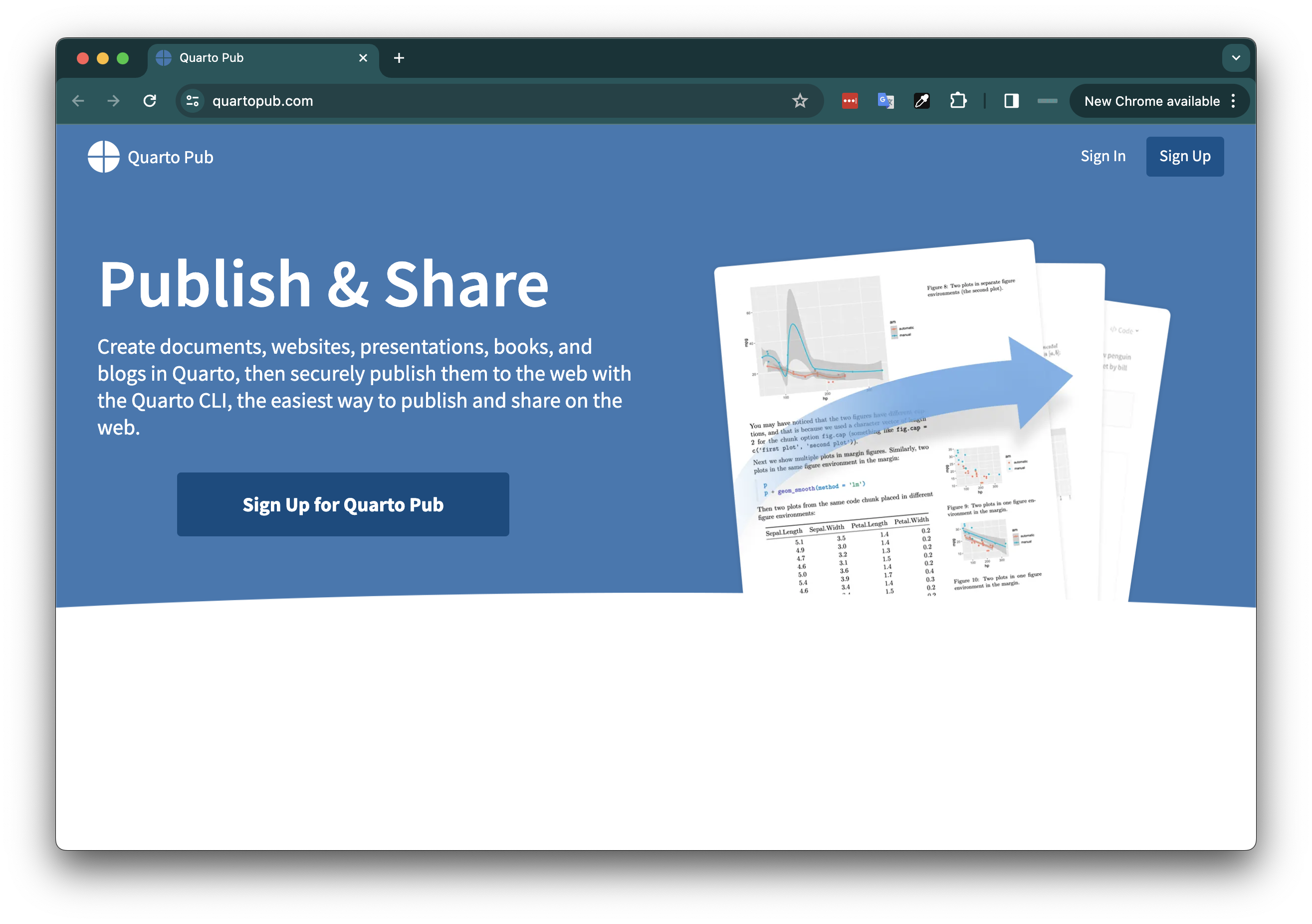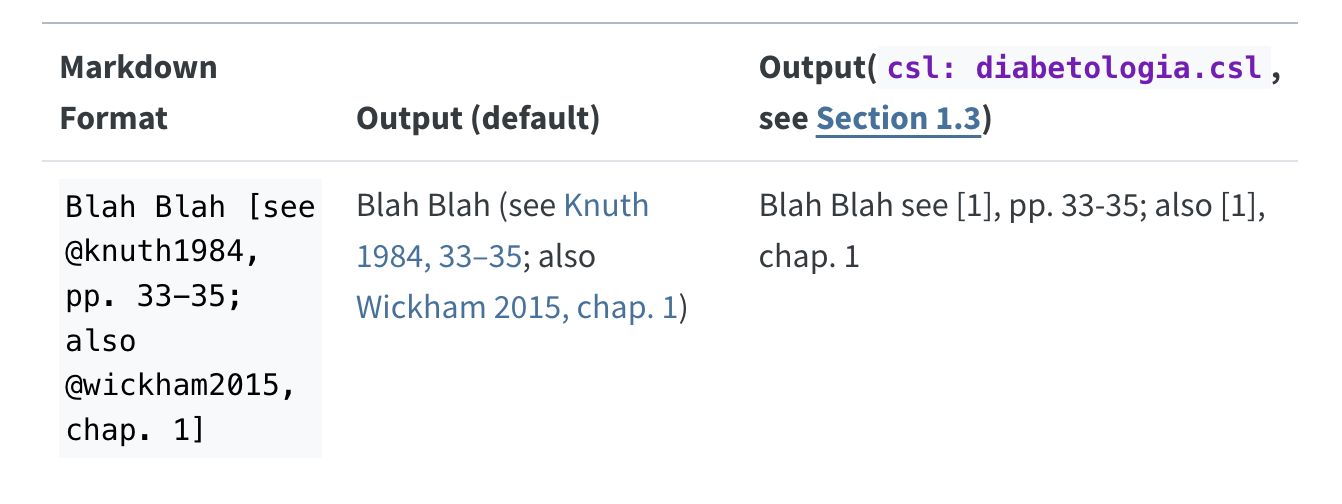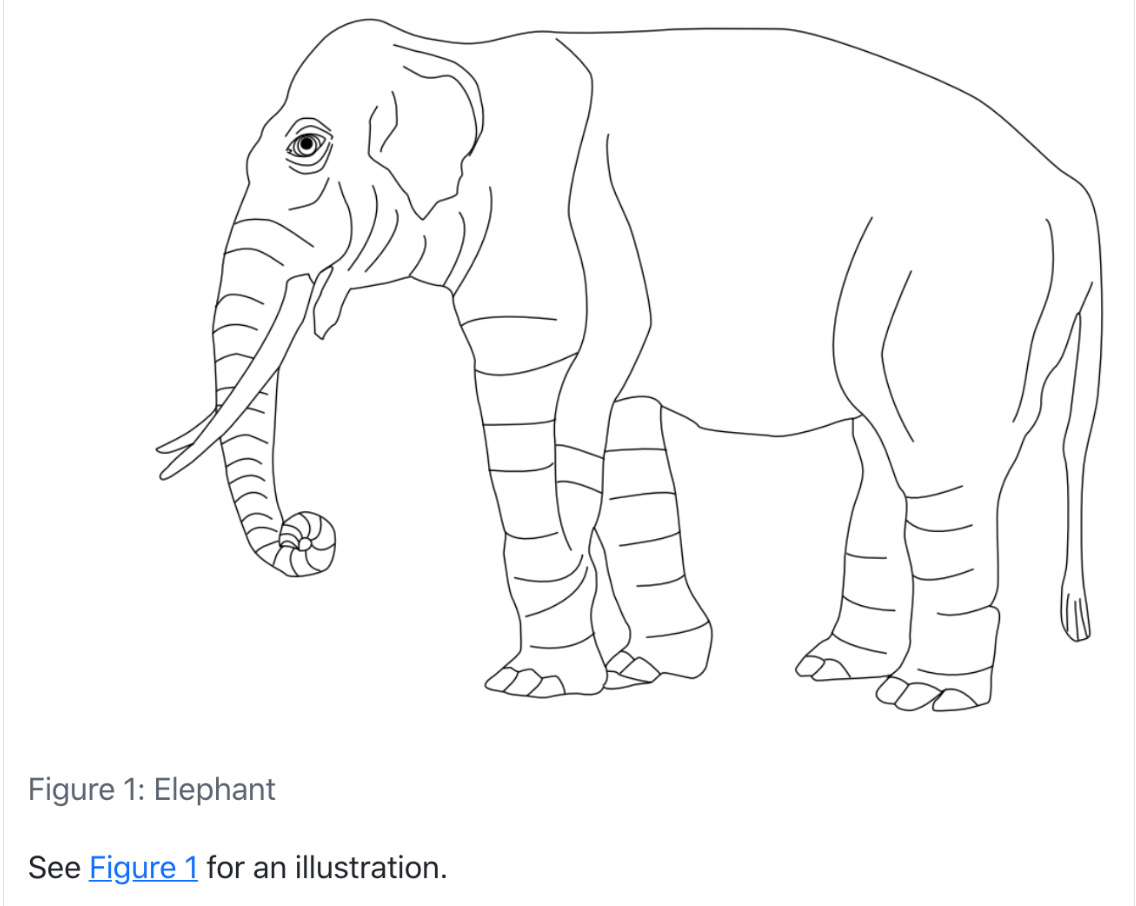Introduction to Quarto
Next generation scientific publishing in R
Quarto is a modern, open-source, and flexible platform for creating documents, reports, presentations, and more, primarily focused on data science and technical writing.
Quarto is built on top of R Markdown and Pandoc, and is designed to be easy to use, highly customizable, and to produce high-quality output.
Quarto is a standalone tool but does ship with later versions of Rstudio. Upgrades do need to be downloaded and installed manually however. See Quarto Download page for latest release.
Quarto has an active community of users and contributors who provide support, share tips and tricks, and contribute to the development of the platform. This community aspect fosters learning and collaboration among users.
Quarto is closely related to literate programming in its philosophy and functionality.
Literate programming
Literate programming is a programming paradigm first introduced by Donald E. Knuth.
Treat program as literature meant to be understandable to human beings
- move away from writing programs in the manner and order imposed by the computer
- focus instead on the logic and flow of human thought and understanding
- single document to integrate data analysis (executable code) with textual documentation, linking data, code, and text
Why is this important in science:
Enables reproducibility
Enables reproducibility through packaging code, text and output into a single executable document.
Enables open science
Literate programming allows us to record and publish information and discussions about code and analyses in more readable formats.
Literate programming in R
Quarto (qmd) Overview
Quarto integrates:
– a documentation language (.md)
– a number of programming languages (including R)
Allows us to combine tools, processes and outputs into interactive, reproducible evidence streams that are easily shareable, particularly through the web.
A researchers perspective on Quarto
A reproducible workflow in action:
Elements of Quarto
markdown {.md}
Simplified version of the html markup language. User can focus on communicating & disseminating
intended to be as easy-to-read and easy-to-write as possible.
most powerful as a format for writing to the web.
syntax is very small, corresponding only to a very small subset of HTML tags.
clean and legible across platforms (even mobile) and outputs.
formatting handled automatically
html markup language also handled.
code {r, python, SQL, … }
Code chunks defined through special notation. Executed in sequence. Exceution of individual chunks controllable
-
Analysis self-contained and reproducible
- Run in a fresh R session every time document is knit.
-
A number of Language Engines are supported by
knitr- R (default)
- Python
- SQL
- Bash
- Julia
- Observable
Quarto Outputs
Quarto can output to a variety of formats, including:
- HTML
- Word
Which can be combined into a variety of more complex formats, including:
- Slides
- Books
- Dashboards
- Websites
- Manuscripts
Superpower: Simple interface to powerful modern web technologies and libraries
Quarto extensions
Quarto has a number of extensions, many community contributed, that make it even more powerful:
Examples of Quarto extensions include:
- fontawesome: Use Font Awesome icons in HTML and PDF documents.
- academicons: Use Academicons in HTML documents.
- line-highlight: Filter to enable source code and output line highlighting for HTML documents.
And much more!
All this makes it incredibly versatile.
Publish to the web for free!
Quarto Pub:
Quarto Pub is a free publishing service for content created with Quarto. Quarto Pub is ideal for blogs, course or project websites, books, presentations, and personal hobby sites.
Quarto Pub allows you to publish rendered quarto documents and websites to the web for free with a simple command.
Terminal
quarto publish quarto-pubLearn more: https://quarto.org/docs/publishing/quarto-pub.html
Applications of Quarto in research
qmd documents can be useful for a number of research related materials
-
Vignettes: long form documentation.
- Analyses
- Documentation (code & data)
- Supplementary materials
- Reports
- Papers
- Personal research websites and blogs
- Theses!
Quarto Features for Scientific Publishing
Quarto can generate citations and a bibliography in a number of styles. You will need:
A bibliographic data source, (.bib) or (.bibtex) file.
Optionally, a CSL file which specifies the formatting to use when generating the citations and bibliography.
---
title: "Toward a Unified Theory of High-Energy Metaphysics: Silly String Theory"
date: 2008-02-29
author:
- name: Josiah Carberry
id: jc
orcid: 0000-0002-1825-0097
email: josiah@psychoceramics.org
affiliation:
- name: Brown University
city: Providence
state: RI
url: www.brown.edu
abstract: >
The characteristic theme of the works of Stone is
the bridge between culture and society. ...
keywords:
- Metaphysics
- String Theory
license: "CC BY"
copyright:
holder: Josiah Carberry
year: 2008
citation:
container-title: Journal of Psychoceramics
volume: 1
issue: 1
doi: 10.5555/12345678
funding: "The author received no specific funding for this work."
---Scholarly articles require much more detail in their front matter & Quarto provides a rich set of YAML metadata keys to describe these details:
- authors and their affiliations,
- abstracts and keywords.
- information on copyright, licensing and funding.
Adding a reference to an image:
{#fig-elephant}Referencing the image:
See @fig-elephant for an illustration.Cross-references make it easier for readers to navigate your document by providing numbered references and hyperlinks to various entities like figures and tables
Resources
Quarto cheatsheet
Quarto Guide
Comprehensive guide to using Quarto.
Quarto Reference
Options reference for formats, code cells, and projects.
Quarto Tutorials
Tutorial to get started with Quarto.
Quarto Gallery
Check out the Quarto gallery for ideas.





